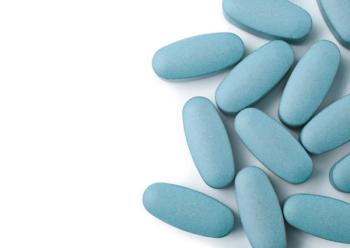
Measuring Urinary Antibiotic Levels May Indicate Depression Risk in Adolescents
Key Takeaways
- Higher urinary antibiotic levels in adolescents correlate with increased depression severity, as measured by HAM-A and HAM-D scores.
- The study identifies urinary antibiotic measurements as a potential non-invasive screening tool for adolescent depression risk.
A groundbreaking study links antibiotic exposure to increased depression risk in adolescents, highlighting urinary analysis as a potential screening tool.
In a recent study, the first of its kind to explore the impact of antibiotics on adolescent depression, investigators evaluated the risk that antibiotic exposure may pose to adolescents in developing depression.1 With a growing prevalence of depression in adolescents, the authors examined the link between gut microbiome and depression, finding that antibiotics may impact gut microbiome.
Jin et al, in their study “The association between urinary antibiotic levels and the risk of adolescent depression,” identified 4 common antibiotics (azithromycin, sulfadimidine, ofloxacin, and ampicillin) to measure through urinary analysis. They compared single day, morning urinary samples from a group of 30 adolescents diagnosed with depression per the International Classification of Diseases (ICD-10) and a healthy control group of 32 adolescents. Urinary analysis was performed via liquid chromatography. Within the group of patients with depression, individuals were divided into low-moderate and severe groups based on their HAM-A and HAM-D scores. The control group was 75% female and 25% male, while the patient group was 76.7% female and 23.3% male. Between the control group and group with depression, there was no significant difference in BMI, age, or gender.
Participants with depression had significantly higher levels of each antibiotic, and higher levels were positively correlated with higher scores on elements of the Hamilton Anxiety Rating Scale (HAM-A) and Hamilton Depression Rating Scale (HAM-D). The authors further noted that a combination of measuring of all 4 antibiotics showed the best performance as a predictor of adolescent depression. The study indicated that urinary antibiotic measurements are a potential screening tool for adolescent depression risk and noted that antibiotic exposure for this age group is a modifiable risk.
For each of the 4 antibiotic types evaluated in this study, all 4 were positively correlated with HAM-A and HAM-D scores. For HAM-A scores: azithromycin (r = 0.402, P = 0.0012), sulfadimidine (r = 0.384, P = 0.002), ofloxacin (r = 0.390, P = 0.002), and ampicillin (r = 0.461, P = 0.0002). For HAM-D scores: azithromycin (r = 0.383, P = 0.0021), sulfadimidine (r = 0.362, P = 0.0004), ofloxacin (r = 0.350, P = 0.005), and ampicillin(r = 0.429, P = 0.0005). From the HAM-A test, each antibiotic was correlated with scores on anxiety and autonomic nervous symptom items; from the HAM-D, each antibiotic was correlated with scores on anxiety, weight, cognitive disturbance, sleep disturbance, hopelessness, and other items. Although, there was no significant difference between the low-moderate and severe subgroups. There was still a significant difference between the control and depression groups.
A multitude of previous studies have acknowledged the effect of antibiotics on gut microbiome homeostasis, and the interactions of the microbiome-gut-brain axis are widely recognized.2,3 The gut microbiome also has a known influence on brain function and behavior in adolescents.4 Similarly, previous studies were also conducted with groups of elderly individuals in China which showed evidence of antibiotic induced depression. With these prior findings, the investigators delved further into the effects of antibiotics on the gut microbiome, and therefore brain function and risk of depression in adolescents. The study authors also noted that there are no consistent, replicable finding on what specific types or levels of microbiome elements are associated with
The authors also explored performance of screening techniques based on urinary antibiotic analysis. With the finding that a combinatory measurement of antibiotic types was the most accurate screening for adolescent depression risk using urinary analysis, investigators proposed that evaluating urine may enhance screening for high risk populations. Elevated urinary antibiotic levels may also serve as more objective measurements for critical risk factors in adolescent depression, compared with subjective self reported patient surveys. Especially as use of antibiotics to treat infections in adolescents is associated with increased risk of mental disorders, the authors noted that controlling use of antibiotics in adolescents may be a key step to prevent depression in this population. New measurements of urinary antibiotic levels can bolster existing strategies to enhance early risk assessment and targeted intervention for MDD in adolescents, they added. “Our study highlights urinary antibiotic levels as modifiable risk factors strongly associated with adolescent depression. The integration of these non-invasive biomarkers demonstrates robust performance in screening for depression risk, offering a novel approach to complement existing diagnostic strategies and prioritize early risk identification in vulnerable populations,” the authors concluded.
References
1. Jin Y, Jin X, Ge Z, et al.
2. Kelly JR, Borre Y, O' Brien C, et al.
3. Chung YE, Chen HC, Chou HL, et al.
4. Diaz Heijtz R, Wang S, Anuar F, et al.
Newsletter
Receive trusted psychiatric news, expert analysis, and clinical insights — subscribe today to support your practice and your patients.




